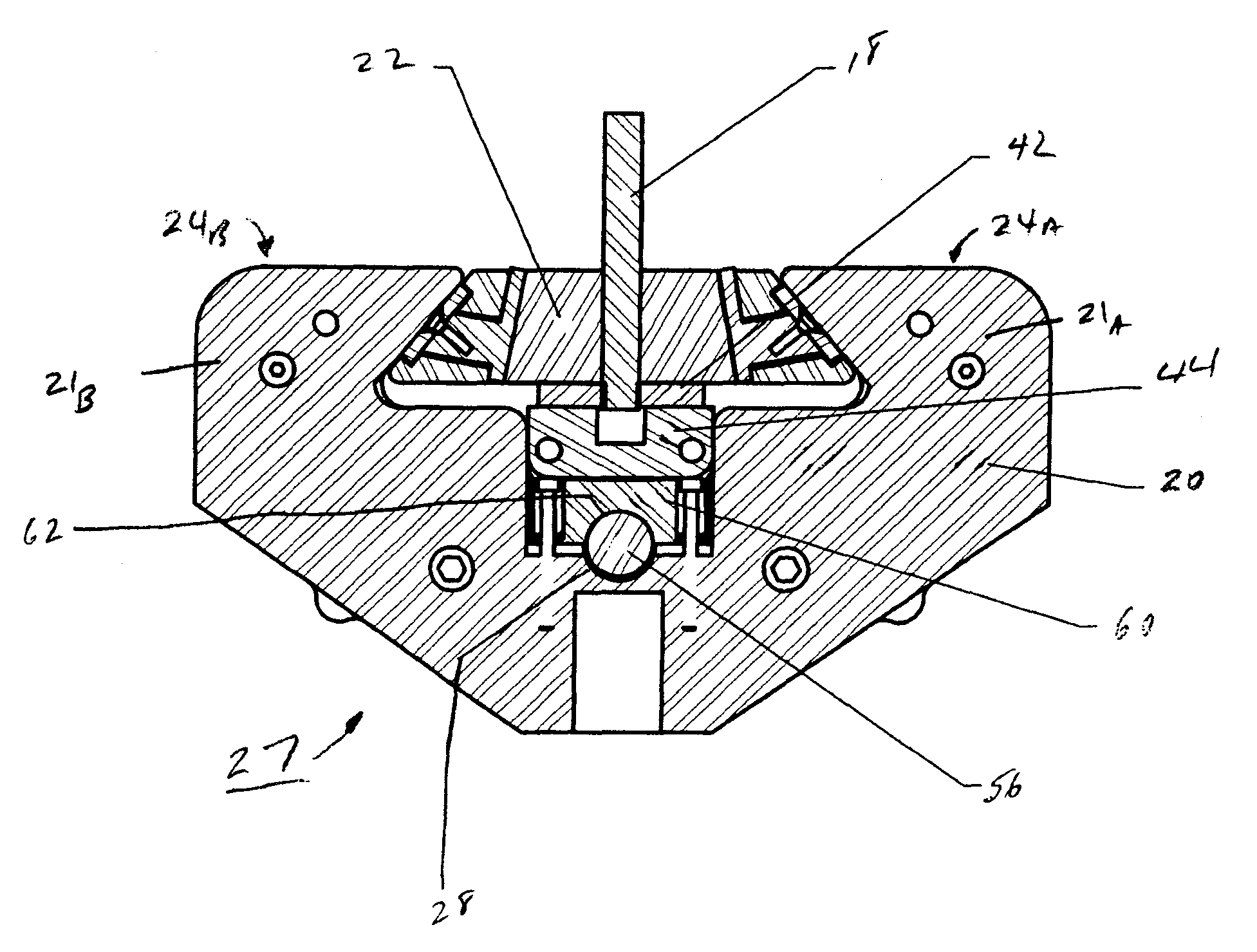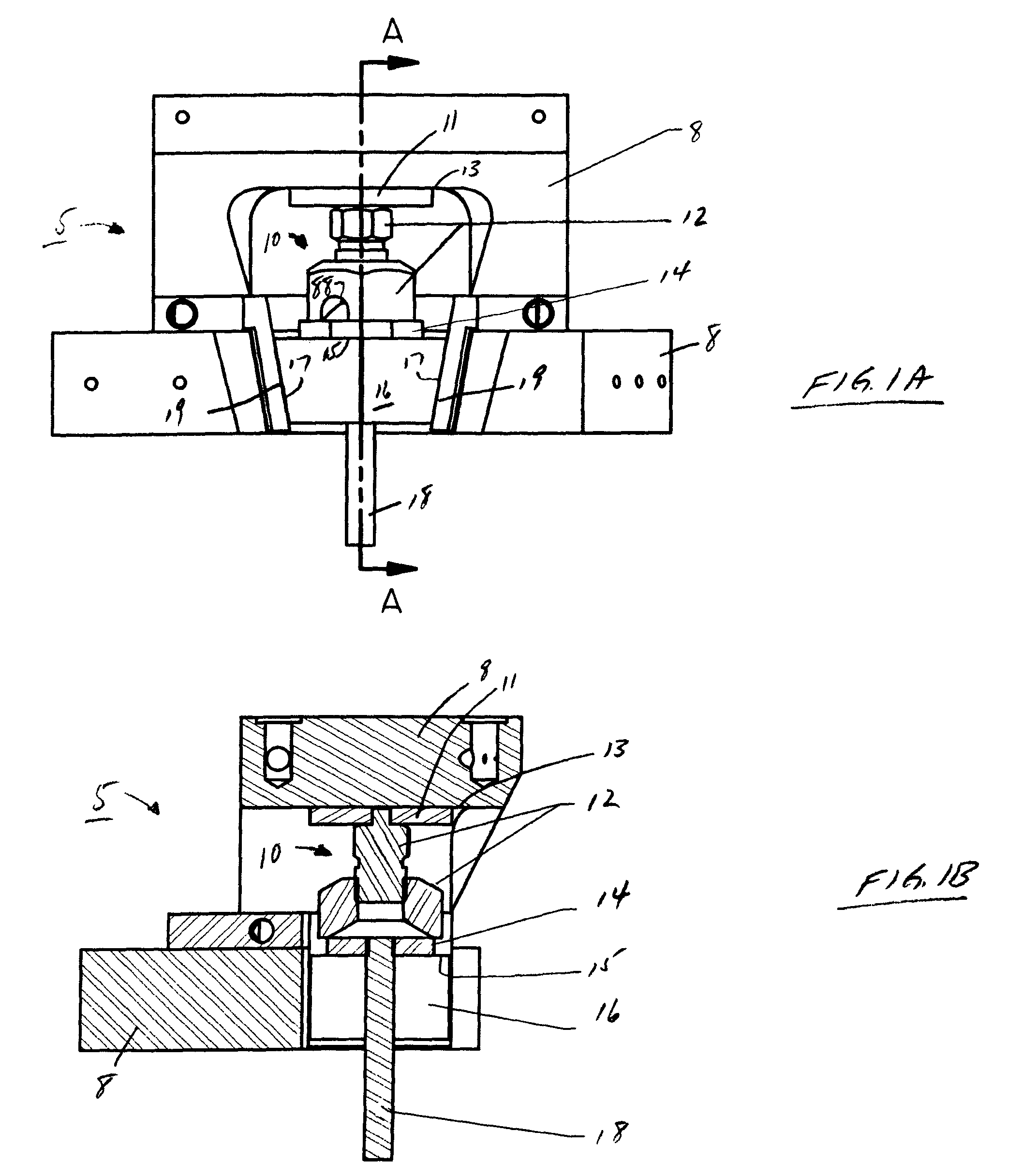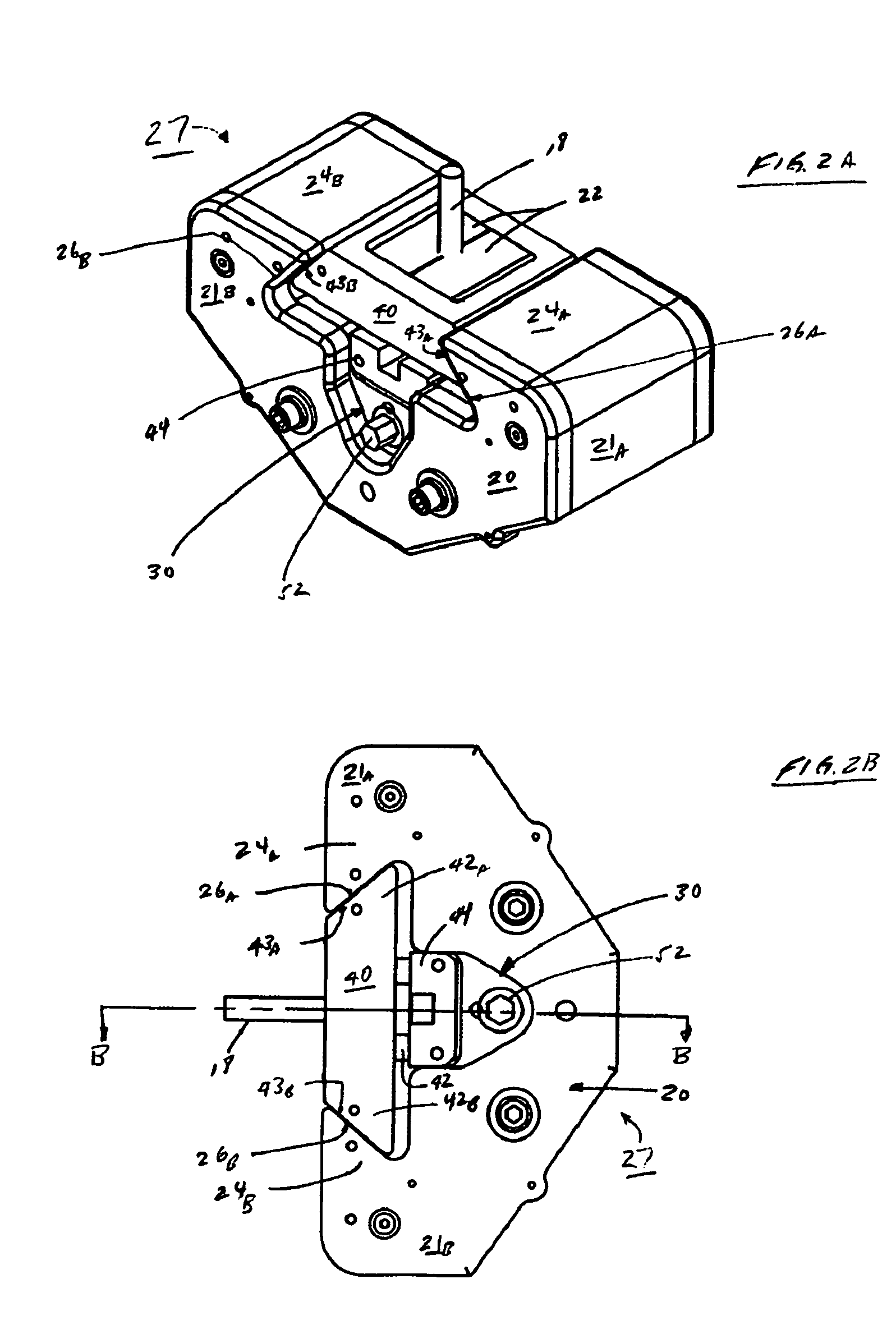Apparatus for a cam-based jack assembly for use in materials, testing machines and an accompanying method for use therewith
a technology of cam-based jacks and jack assemblies, which is applied in the direction of mechanical measuring arrangements, instruments, and using mechanical means, etc., can solve the problems of reducing the mechanical force applied by the cam alone onto the grip, injecting unwanted artifacts into the resulting amount of deformation, and causing the effect of increasing the force and eliminating the artifacts of mechanical test results
- Summary
- Abstract
- Description
- Claims
- Application Information
AI Technical Summary
Benefits of technology
Problems solved by technology
Method used
Image
Examples
Embodiment Construction
[0037]My inventive jack assembly can be used across a wide variety of applications where a removable piece is to be mechanically locked in place between two opposing inwardly facing projections of a pair of arms extending out of a common housing, where the piece and housing abuttingly mate through complementary wedge or other appropriately shaped surfaces that provide a sufficient frictional coupling to resist relative movement therebetween. To simplify the discussion and facilitate understanding, I will illustratively describe my inventive assembly in the context of use in a mechanical materials test machine and particularly within a jaw in that machine which holds a specimen grip.
[0038]FIGS. 1A and 1B respectively depict a side view of jaw 5 used in a mechanical testing system and a cross-sectional view taken across lines A-A shown in FIG. 1A of this jaw. Conventionally, as shown in these two figures, specimen grip 16, which securely holds mechanical test specimen 18, is itself po...
PUM
 Login to View More
Login to View More Abstract
Description
Claims
Application Information
 Login to View More
Login to View More - R&D
- Intellectual Property
- Life Sciences
- Materials
- Tech Scout
- Unparalleled Data Quality
- Higher Quality Content
- 60% Fewer Hallucinations
Browse by: Latest US Patents, China's latest patents, Technical Efficacy Thesaurus, Application Domain, Technology Topic, Popular Technical Reports.
© 2025 PatSnap. All rights reserved.Legal|Privacy policy|Modern Slavery Act Transparency Statement|Sitemap|About US| Contact US: help@patsnap.com



